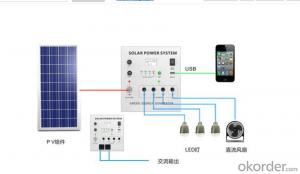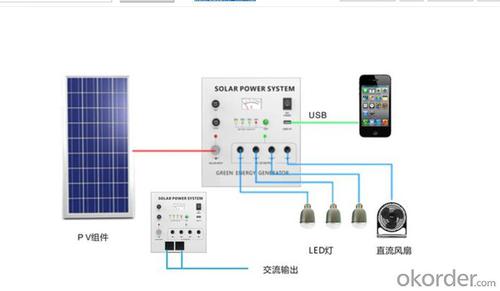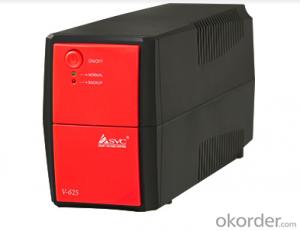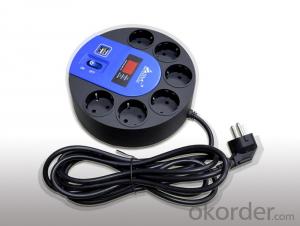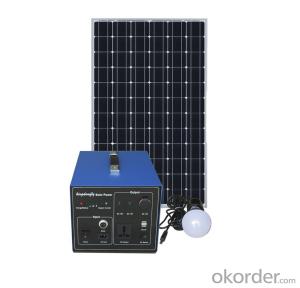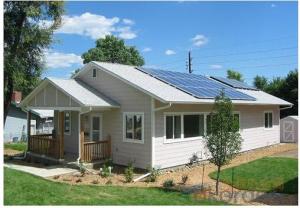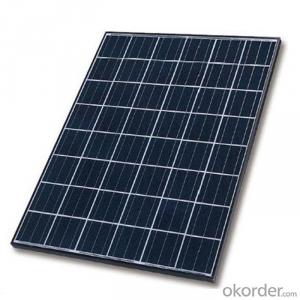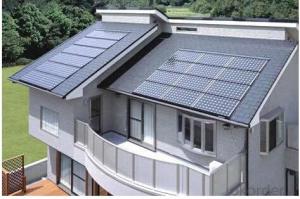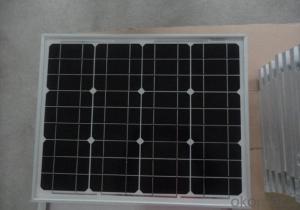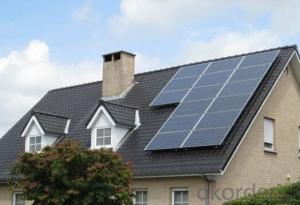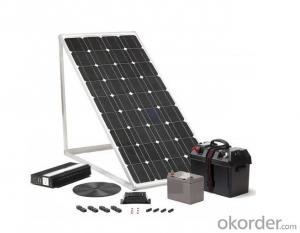Red Sun Solar Energy Systems - Solar System 30W Made in China
- Loading Port:
- China Main Port
- Payment Terms:
- TT OR LC
- Min Order Qty:
- -
- Supply Capability:
- -
OKorder Service Pledge
Quality Product, Order Online Tracking, Timely Delivery
OKorder Financial Service
Credit Rating, Credit Services, Credit Purchasing
You Might Also Like
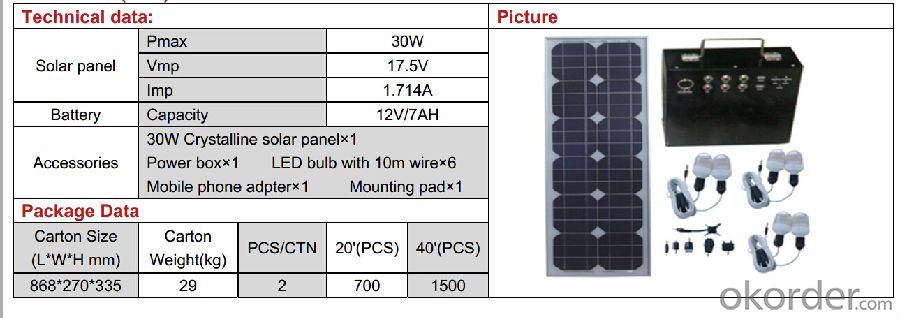
- Q: Can solar energy systems be used to power agricultural operations?
- Yes, solar energy systems can be used to power agricultural operations. Solar panels can generate electricity that can be used to power various agricultural equipment such as irrigation systems, water pumps, and machinery. This renewable energy source can provide a sustainable and cost-effective solution for powering farming operations while reducing reliance on fossil fuels.
- Q: Is solar energy reliable?
- Yes, solar energy is reliable. It is a renewable energy source that harnesses the power of the sun, which is a constant and abundant source of energy. With advancements in technology, solar panels have become more efficient and dependable, making solar energy a reliable and sustainable option for generating electricity.
- Q: Can solar energy systems be used in areas with limited technological infrastructure?
- Yes, solar energy systems can be used in areas with limited technological infrastructure. Solar energy systems are versatile and can be designed to meet the specific needs of different communities, regardless of their technological capabilities. These systems can be relatively simple and require minimal maintenance, making them suitable for areas with limited infrastructure. Additionally, solar energy can be harnessed using basic equipment like solar panels and batteries, which makes it accessible even in remote locations.
- Q: Can solar energy systems be installed on sloped surfaces?
- Yes, solar energy systems can be installed on sloped surfaces. In fact, sloped surfaces can sometimes be advantageous for solar panel installation as they can enhance the exposure to sunlight and increase the efficiency of the system.
- Q: How often do solar panels need to be cleaned or maintained?
- Solar panels typically require minimal maintenance and cleaning. In most cases, they only need to be cleaned once or twice a year, depending on the location and climate. Regular inspections and light cleaning can help ensure optimal performance and efficiency of solar panels.
- Q: Can solar energy systems be used for powering industrial manufacturing plants?
- Yes, solar energy systems can be used for powering industrial manufacturing plants. With advancements in solar technology and the availability of large-scale solar panels, industrial manufacturing plants can harness solar power to meet their energy needs. This not only helps reduce reliance on fossil fuels but also contributes to cost savings and environmental sustainability in the long run.
- Q: Can a solar energy system be used to heat water?
- Yes, a solar energy system can be used to heat water. Solar water heating systems use the sun's energy to heat water through collectors, which are typically installed on the roof. These collectors absorb sunlight and transfer its heat to a fluid, such as water or antifreeze, which is then circulated through pipes to heat water for domestic or commercial use. This process is efficient and environmentally friendly, making solar water heating a popular choice for reducing energy consumption and costs.
- Q: Can solar energy systems be installed on airports or transportation hubs?
- Yes, solar energy systems can be installed on airports or transportation hubs. In fact, many airports and transportation hubs around the world have already embraced solar energy as a sustainable and cost-effective solution. These systems can be installed on rooftops, parking structures, or open spaces within the premises, providing clean and renewable energy to power various operations and reduce carbon emissions.
- Q: Can solar energy systems be used in areas with limited access to sunlight due to tall nearby buildings or trees?
- Solar energy systems require direct sunlight to generate electricity. Therefore, areas with limited access to sunlight due to tall nearby buildings or trees may not be ideal for installing solar energy systems. The shading caused by these structures can significantly reduce the efficiency and effectiveness of solar panels. However, there are alternative solutions such as adjusting the panel placement, using tracking systems, or exploring other renewable energy options that can overcome some of these limitations.
- Q: Can solar energy systems be used in areas with limited resources?
- Yes, solar energy systems can be used in areas with limited resources. Solar energy is a renewable and abundant source of power that can be harnessed even in remote or underdeveloped regions. The installation and maintenance costs of solar systems have significantly decreased over the years, making them more accessible to communities with limited resources. Additionally, solar energy systems can provide electricity and heat without relying on external fuel sources, reducing the dependence on expensive imports. Overall, solar energy offers a sustainable and viable solution for areas with limited resources, helping to meet their energy needs and enhance their socio-economic development.
Send your message to us
Red Sun Solar Energy Systems - Solar System 30W Made in China
- Loading Port:
- China Main Port
- Payment Terms:
- TT OR LC
- Min Order Qty:
- -
- Supply Capability:
- -
OKorder Service Pledge
Quality Product, Order Online Tracking, Timely Delivery
OKorder Financial Service
Credit Rating, Credit Services, Credit Purchasing
Similar products
Hot products
Hot Searches
Related keywords
